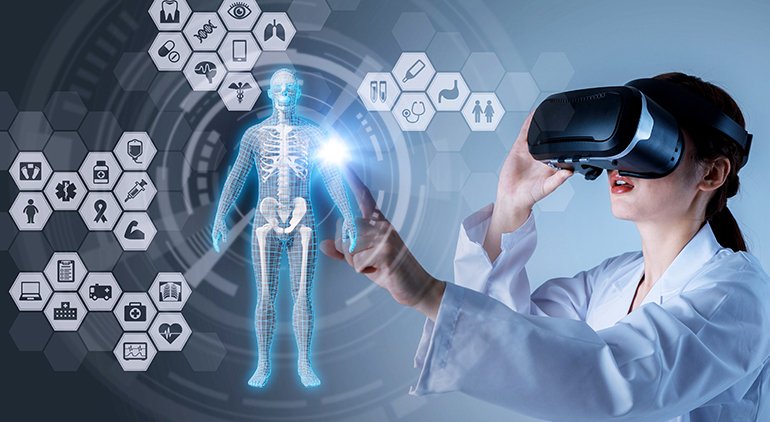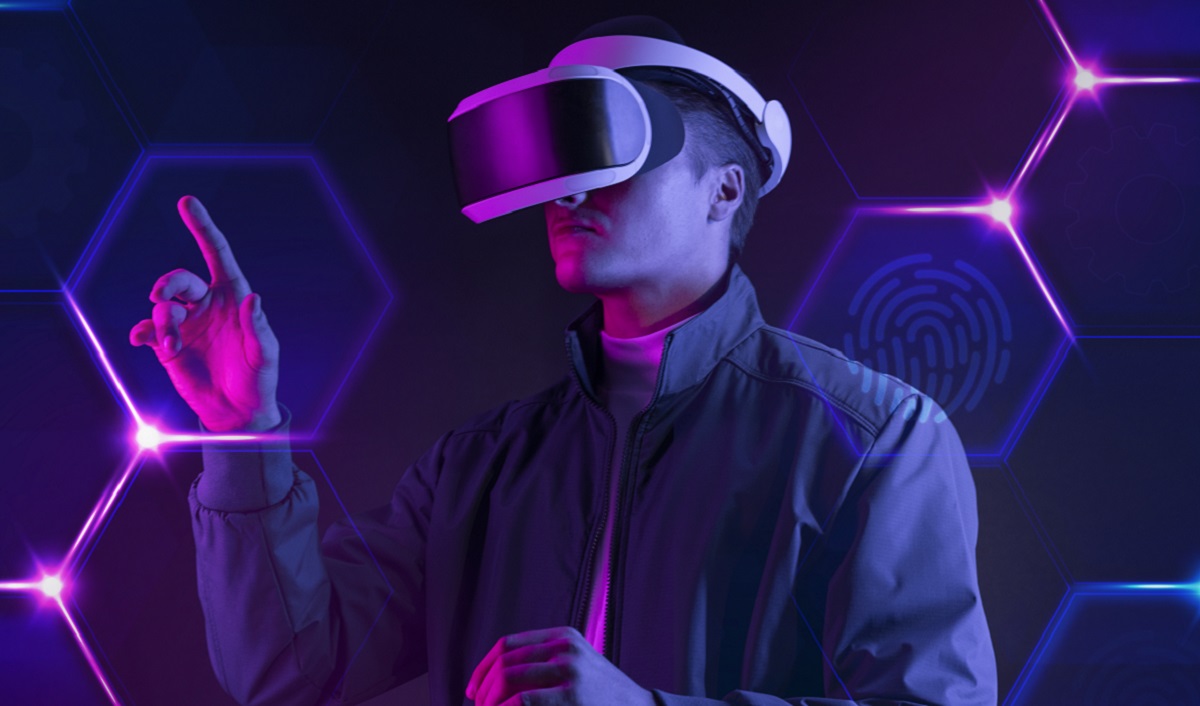Revolutionizing Patient Education and Compliance with AR

Augmented Reality (AR) is revolutionizing patient education and compliance. AR education is a new and innovative approach to teaching patients about their health and treatments while ensuring they adhere to prescribed regimens. By utilizing AR technology, healthcare professionals can ensure patients receive the best possible care and are more informed about their health. In this blog post, we will explore how AR education is being used to revolutionize patient education and compliance.
The importance of patient AR education and compliance

AR education and compliance are crucial aspects of healthcare that play a significant role in ensuring positive outcomes for patients. Patients who are well-informed about their conditions and treatment plans are better equipped to make informed decisions and actively participate in their care.
Education empowers patients by giving them the knowledge they need to understand their diagnosis, treatment options, and potential risks and benefits. It enables them to ask relevant questions, engage in meaningful discussions with their healthcare providers, and actively participate in shared decision-making. This, in turn, leads to better treatment adherence and improved patient outcomes.
However, studies have shown that many patients struggle with understanding their healthcare information, leading to low compliance rates. Misunderstanding treatment instructions, not taking medications as prescribed, and failing to follow through with lifestyle changes can significantly affect patients’ health and well-being.
That’s where augmented reality (AR) companies into play. AR technology can revolutionize patient ar education and compliance by providing immersive and interactive experiences that enhance understanding and engagement. With AR, patients can visualize complex medical concepts, see realistic simulations of procedures, and explore virtual models of their anatomy. This not only makes the learning process more enjoyable but also facilitates better retention of information.
By using AR to educate and engage patients, healthcare providers can bridge the gap between knowledge and action, ultimately leading to improved treatment compliance and better health outcomes. In the following sections, we will delve deeper into the benefits of using AR education and compliance and explore its potential to revolutionize healthcare delivery.
Lack of understanding and adherence to treatment plans among patients
One of the critical challenges in healthcare today is the need for more understanding and adherence to treatment plans among patients. Many patients need help comprehending complex medical information, leading to confusion and potentially dangerous mistakes in their care. Additionally, even when patients understand their treatment plans, they may need help with adherence, often due to forgetfulness or the burden of managing multiple medications and appointments.
This lack of understanding and adherence can significantly impact patient outcomes. When patients don’t fully understand their treatment plans, they may not follow through on necessary actions, such as taking medications at the correct times or following recommended lifestyle changes. This can worsen health conditions, increase hospitalizations, and higher healthcare costs.
Traditional patient ar education methods, such as pamphlets or verbal explanations from healthcare providers, have limitations in addressing these challenges. They may not effectively engage patients or provide the level of detail needed for comprehension. This is where augmented reality (AR) can make a significant difference.
AR technology can provide patients with immersive and interactive educational experiences that are engaging and informative. By using AR, patients can visualize complex medical concepts, such as the workings of the human body or the effects of different treatments, in a way that is easy to understand. They can also interact with virtual objects and scenarios, allowing them to practice and reinforce essential healthcare actions.
Moreover, AR can help improve treatment adherence by providing patients with reminders and support throughout their care journey. For example, AR apps can send medication reminders and track adherence, assisting patients to stay on track with their prescribed medications. Additionally, AR can provide personalized recommendations and guidance based on individual patient needs and progress.
By addressing the lack of understanding and adherence among patients, AR has the potential to revolutionize patient ar education and improve healthcare outcomes. It can empower patients to take an active role in their care and make informed decisions about their health. Furthermore, AR can enhance patient-provider communication, as healthcare professionals can use the same AR tools to explain medical concepts and treatment plans more effectively. Overall, AR holds great promise in transforming patient education and compliance, and it is an exciting development in healthcare technology.
Benefits of using AR for patient education and compliance

Augmented Reality (AR) has the potential to revolutionize patient ar education and compliance in numerous ways. One of the key benefits of using AR is its ability to provide a more immersive and interactive learning experience for patients. Instead of relying on traditional educational materials, such as pamphlets or brochures, AR can offer patients a visual and hands-on approach to understanding their condition and treatment plan.
By overlaying digital information in the real world, AR can help patients visualize complex medical concepts and procedures in an easily understandable way. For example, a patient with diabetes can use AR to see a virtual representation of their pancreas and how it functions, helping them better understand their condition’s impact and the importance of following their treatment plan.
AR also has the potential to enhance patient engagement and motivation. With its interactive nature, patients can actively participate in their learning process, making it more enjoyable and memorable. AR can also provide real-time feedback and reminders to patients, ensuring that they are consistently reminded of important information and tasks related to their treatment plan.
Furthermore, AR can assist healthcare providers in tracking and monitoring patient compliance. By using AR-enabled devices, providers can monitor patient activities, such as medication adherence or physical therapy exercises, and provide immediate feedback and guidance when necessary. This can improve patient outcomes by ensuring patients follow their treatment plan correctly and consistently.
Explore how AR can enhance patient education and engagement.
Augmented Reality (AR) can revolutionize patient ar education and engagement. Traditional patient education methods often rely on static images or written materials, which may not effectively capture the attention or interest of patients. However, AR can provide an interactive, immersive experience that enhances patient education and engagement.
By using AR technology, healthcare providers can create virtual simulations and scenarios that allow patients to visualize and understand complex medical concepts. For example, a patient with a heart condition can use AR to see a 3D representation of their heart, enabling them to understand their condition and treatment options better. This visual aid can help patients make more informed decisions about their healthcare and treatment plans.
AR can also enhance patient engagement by making educational materials more interactive and engaging. Patients can actively participate in the learning process instead of simply reading or watching a video. For instance, an AR app could guide patients through exercises or demonstrate proper medication administration techniques. This hands-on approach increases patient involvement and can lead to better retention of information.
Furthermore, AR can personalize the ar education experience by tailoring it to the patient’s needs and preferences. Healthcare providers can develop AR applications that cater to different learning styles or languages, ensuring that information is accessible and understandable to all patients. This personalization promotes a sense of empowerment and ownership in the patient’s healthcare journey.
In summary, AR has the potential to transform patient education and engagement by providing interactive and immersive experiences. By utilizing this technology, healthcare providers can improve patient understanding and adherence to treatment plans, ultimately leading to better health outcomes. As AR continues to evolve, the possibilities for enhancing patient education and compliance are endless.
How can AR enhance improving treatment compliance and outcomes?
Augmented Reality (AR) has the potential to significantly enhance treatment compliance and outcomes by providing patients with an interactive and immersive educational experience. Traditional patient education methods often rely on pamphlets, brochures, or verbal explanations, which can be overwhelming and confusing for patients. AR can bridge this gap by visually representing the treatment process, allowing patients to understand better and retain the information.
AR can also increase patient engagement by making the ar education process more interactive. With AR, patients can participate in virtual simulations and walkthroughs, allowing them better to comprehend the steps and requirements of their treatment plan. This increased engagement can lead to improved adherence to treatment plans, as patients feel more empowered and motivated to follow through.
Furthermore, AR can address the issue of language barriers and literacy levels that often hinder patient education. By utilizing visual cues and animations, AR can communicate complex medical information regardless of the patient’s language or reading abilities. This inclusive approach ensures that all patients have equal access to comprehensive ar education, increasing the likelihood of treatment compliance.
In terms of outcomes, AR can track and monitor patient progress in real-time, providing both patients and healthcare providers with valuable insights. This data-driven approach allows for personalized and tailored interventions, ensuring patients receive the most effective treatment for their needs. Additionally, AR can provide reminders and prompts to encourage patients to adhere to their treatment plans, leading to improved health outcomes.
Overall, AR has the potential to revolutionize patient education and compliance by providing a more immersive and interactive learning experience. AR can enhance treatment compliance and ultimately improve patient outcomes by addressing barriers such as understanding, engagement, and language. The future possibilities for AR in healthcare are promising, and it is an exciting field to watch as it continues to evolve and impact patient care.
Future Possibilities and potential of AR in patient education and Compliance
As technology advances, the future possibilities and potential of augmented reality (AR) in patient education and compliance are fascinating. AR can potentially revolutionize how patients learn about their conditions, treatments, and medications.
One possible future application of AR education is using interactive 3D models. Imagine a patient being able to visualize their anatomy and see how a particular treatment or medication would impact their body in real-time. This level of personalization and visualization can significantly enhance patient understanding and engagement, ultimately leading to better compliance and outcomes.
Another potential use of AR in patient education is gamification. Patients can learn and retain information more effectively by incorporating game-like elements into the educational experience. For example, patients could complete virtual quests or challenges that involve learning about their condition and treatment. This makes learning more enjoyable and incentivizes patients to participate and comply with their treatment plans.
Furthermore, AR has the potential to facilitate remote patient education and monitoring. With the increasing popularity of telehealth and remote healthcare, AR can provide an immersive and interactive educational experience even from a distance. Patients can receive personalized ar educational content and guidance through AR apps, ensuring they have the necessary information and support to adhere to their treatment plans.





